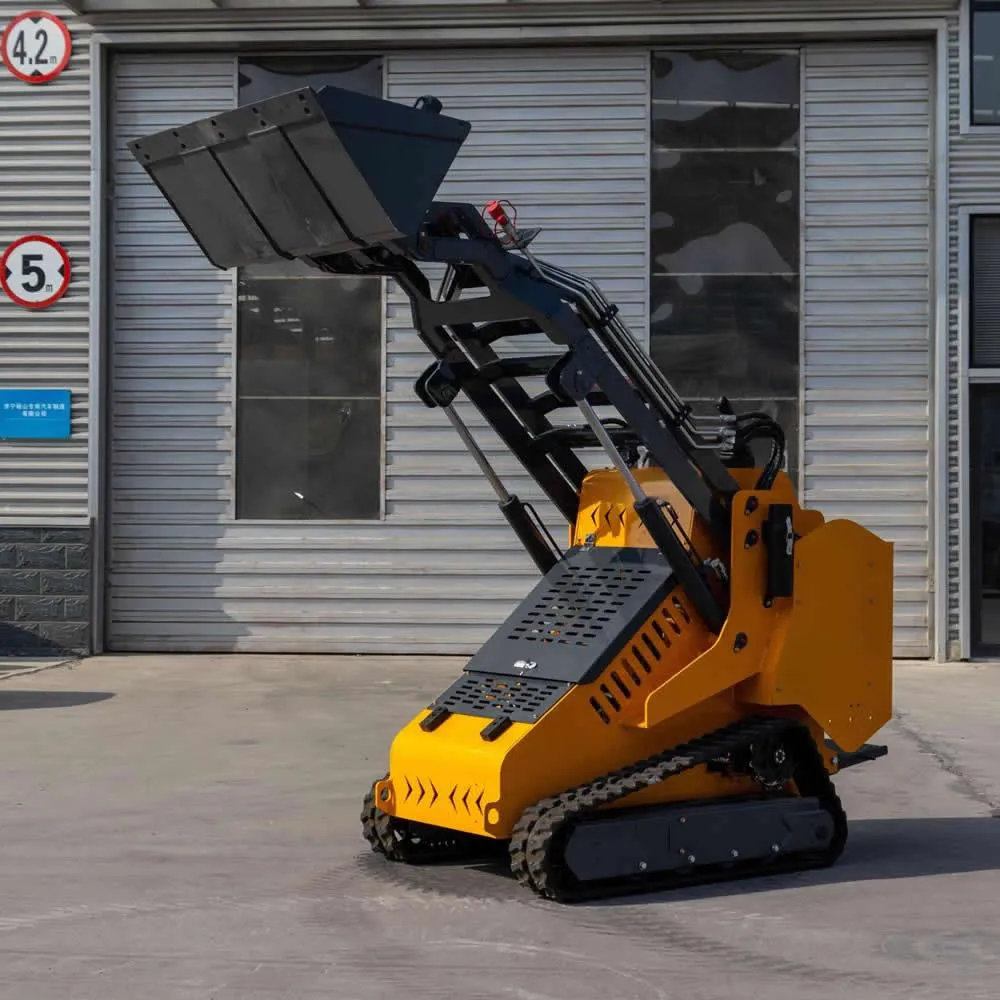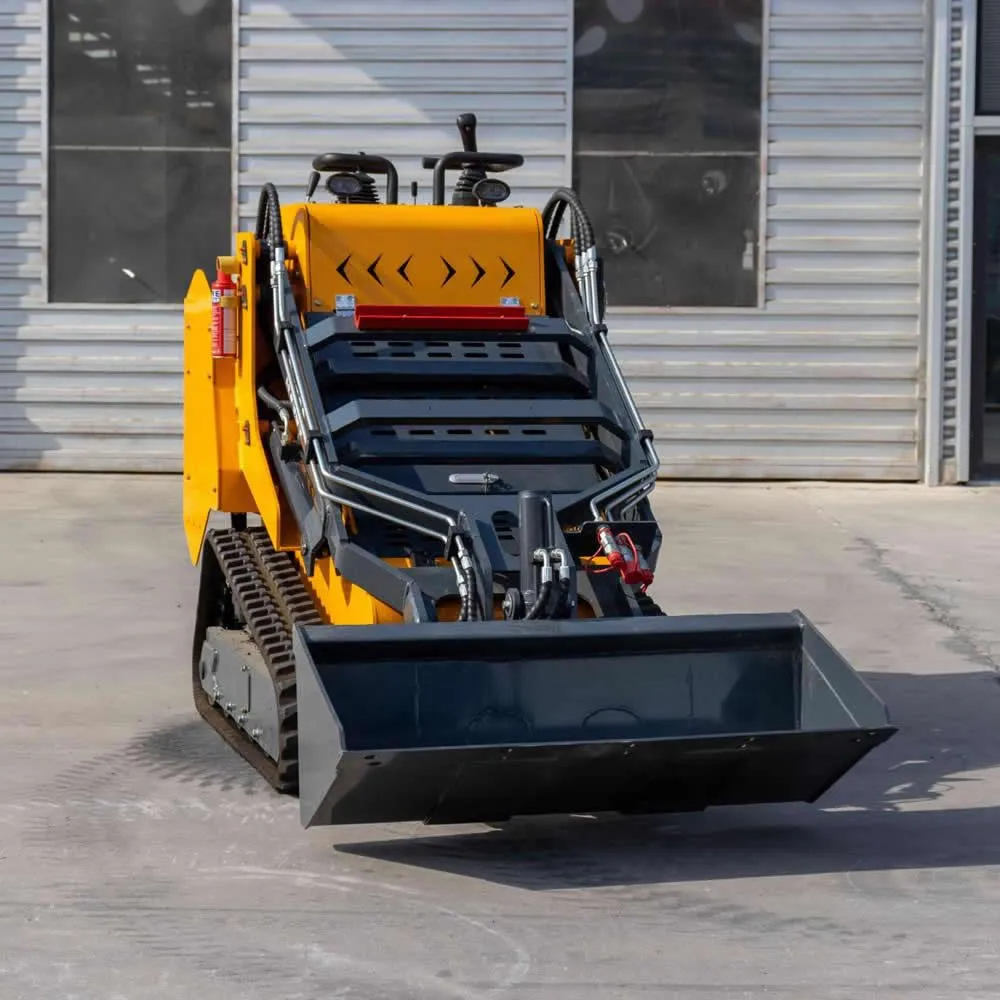
Loaders equipped with high-performance hydraulic systems achieve extremely precise motion response through precise digital proportional control, optimized valve core structure, and real-time feedback modeling, achieving control accuracy down to 0.01mm. This translates to exceptionally fine control of actions such as bucket positioning and hatch opening and closing in heavy-duty environments. Below, we detail the core reasons and optimization mechanisms for hydraulic loaders' such precision.
In hydraulic cylinders or steering controls, the clearance between the main valve core and the valve body of a directional control valve is typically less than 25μm (approximately 0.025mm). This tight fit significantly reduces internal leakage and dynamic deadband, resulting in more accurate control command responses. This fundamental accuracy directly supports achieving or even exceeding the 0.01mm response error limit.
In addition, the use of piezoelectric ceramic drive valves instead of traditional solenoid valves increases the valve core displacement resolution to 50 nanometers. Combined with a high-frequency pressure sensor (sampling frequency up to 1kHz), the system can compensate for pressure fluctuations caused by oil pulsation in real time, achieving a bucket trajectory error of no more than three hair diameters.
Based on the latest research, a digital hydraulic pump is combined with multi-way valve spool displacement feedback control to form a digital control system. By combining a digital pump with a solenoid unloading valve and a proportional flow splitting strategy, the pump output flow can be adjusted in real time, avoiding the throttling losses associated with traditional fixed pump systems.
Genetic algorithm optimization and AMESim simulation calibration of the valve spool orifice structure resulted in more stable flow-pressure characteristics and a narrower deadband under varying flow and pressure conditions. The output control flow can be adjusted nearly continuously, significantly improving the linear response accuracy of the valve operation.

An intelligent damping algorithm with dynamic PID parameter adjustment eliminates hydraulic cylinder "creep";
The main pump is responsible for large-volume coarse flow control, while the micro-servo pump provides ±0.5 bar pressure fine-tuning, enabling dual-pump coordinated oil supply;
The oil viscosity is maintained stable in an ambient temperature range of -30°C to 80°C, achieving a temperature-adaptive module.
A closed-loop control algorithm is introduced, combining multi-parameter feedback control (including pressure, flow, and position) with a hybrid position/force control mechanism to maintain stable operation under high loads and rapid operation.
In addition, a trajectory tracking solution based on LPV-MPC (Linear Parameter Variation Model Predictive Control) is applied in the autonomous control system to achieve high-precision position control and error compensation.
Modern loaders integrate intelligent electronically controlled hydraulic systems with electronically controlled engine architectures, such as the electro-hydraulic collaborative platforms offered by brands like Volvo and Danfoss. These platforms reduce vibration, optimize power distribution and response time, and improve overall system consistency and operational stability, enabling precise positioning.
Furthermore, testing and simulation have verified that the multi-way pump-valve coordination design reduces energy loss by over 30% compared to traditional systems, while significantly improving response speed and maintaining high-precision control even under sudden load changes.
Technological Leadership: Refined valve core structure and digital hydraulic control demonstrate cutting-edge engineering technology and intelligent manufacturing trends in the industry.
Performance Highlights: Achievable control accuracy of 0.01mm, providing a significant differentiation advantage among similar products.
User Benefits: Improved loading efficiency, fuel savings, extended life of key components, reduced abnormal wear, and reduced maintenance costs.
A loader's hydraulic system is crucial for achieving precise control. Traditional loaders typically utilize fixed-displacement pumps and multi-channel directional valves, limiting control accuracy due to flow fluctuations and valve spool deadband. Modern loaders equipped with digital hydraulic systems, however, utilize solenoid-controlled pumps, precisely optimized valve spool structure, and real-time feedback control to achieve control errors within 0.01mm, demonstrating ultimate responsiveness.
First, the high-precision valve spool with controlled clearances at the micron level (≤25µm) significantly reduces leakage and deadband, achieving excellent linear response. This design foundation enables theoretical accuracy of 0.01mm. Second, the digital hydraulic system (multiple pumps in parallel + solenoid unloading valve combination) combined with multi-channel valve spool feedback control achieves adjustable displacement and continuously controlled flow output, effectively avoiding the nonlinear interference associated with traditional throttling losses while also reducing energy consumption.
Furthermore, by optimizing valve port parameters (such as spool groove shape and opening variation) using simulation tools (such as AMESim) and genetic algorithms, the system maintains stable response under complex conditions such as starting, braking, and sudden load changes. Furthermore, the use of real-time closed-loop control and a hybrid position/force control architecture further enhances system stability and accuracy in complex environments. OEMs such as Volvo CE and Danfoss have demonstrated the effectiveness of this technology in their electro-hydraulic hybrid platforms, effectively saving energy and improving operating efficiency.
It is the synergy of these technologies that enables modern loaders to achieve a level of control far exceeding that of traditional equipment in scenarios such as precise loading and fine-tuning positioning, truly delivering the combined benefits of higher efficiency, lower energy consumption, and longer lifespan to users.
Combining the above technologies and optimization methods, modern loaders equipped with hydraulic systems, particularly those utilizing digital hydraulics, spool optimization, and intelligent closed-loop control, are capable of achieving 0.01mm-level operating accuracy under dynamic loads. This is not only a development trend in hydraulic technology, but also means higher efficiency, lower costs, and a better user experience for loaders in demanding applications such as construction and mining.
If you're looking for a high-precision hydraulic loader, please contact us based on your specific environment and operational requirements. We will provide you with a customized, high-precision hydraulic system loader.